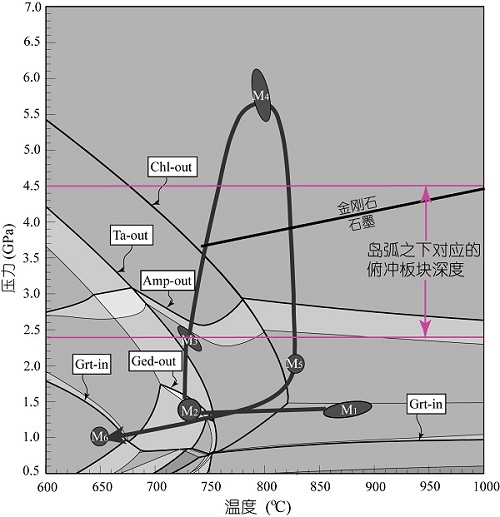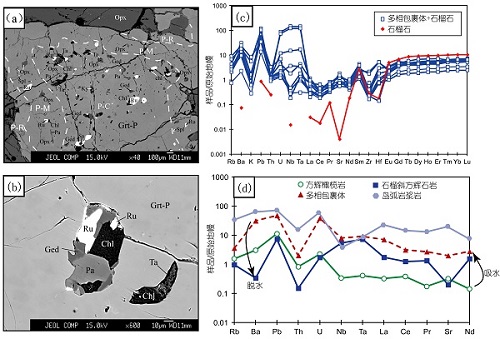Postdoctor ZHU Mingtian and his team report new Fluid inclusions, He/Ar isotopes, zircon U–Pb and pyrite Re–Os geochronological studies of the Yinjiagou poly-metallic deposit, sited along the southern margin of the North China Craton (SMNCC). In this deposit, pyrite, the most important economic mineral, is intergrown/associated with Mo, Cu, Au, Pb, Zn, and Ag.
This study demonstrates that the main chalcopyrite–pyrite mineralization occurred late in the magmatic history and was linked to a deeper intrusion involving dominant mantle-derived materials. This mineralization event might be related to the Early Cretaceous lithospheric destruction and thinning of the SMNCC.

Figure 1. U–Pb concordia diagrams for zircons in the quartz–chalcopyrite–pyrite veins and Re–Os isochron plots for pyrite samples from the Yinjiagou deposit.(Image by ZHU)

Figure 2. Graphs of He-Ar of pyrite-hostedfluid inclusions from Yinjiagou deposit.(Image by ZHU)
Zhu et al. Fluid inclusions and He/Ar isotopes in pyrite from the Yinjiagou deposit in the southern margin of the North China Craton: A mantle connection for poly-metallic mineralization. Chemical Geology, 2013, 351: 1-14(Download Here)
Zhu et al. Zircon U–Pb and pyrite Re–Os age constraints on pyrite mineralization in the Yinjiagou deposit, China. International Geology Review, 2013, 55(13): 1616-1625(Download Here)